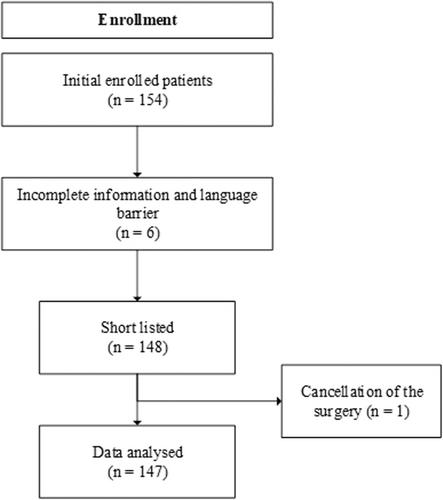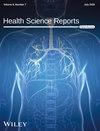Assessment of anxiety in parents of children undergoing tonsillectomy under general anaesthesia: A cross-sectional study
Abstract
Background and Aims
Surgery in the pediatric age group entails a significant amount of anxiety for parents. Due to anxiety, parents are unable to take care of their children, which could affect the child's well-being and contributes to poor outcomes. The primary objective of this study is to determine the frequency of preoperative anxiety in parents before the surgery of their children.
Methods
It is a cross-sectional descriptive study that included either parent of 147 children of American Society of Anaesthesiology (ASA) I & II, aged 1–12 years undergoing tonsillectomy over the period of 1 year. Each parent's demographic data were recorded and requested to answer a proforma containing the Amsterdam Preoperative Anxiety Information Scale (APAIS) for assessing anxiety on a 5-point Likert scale. Median interquartile range (IQR), and frequency (%) were used to report the normal, skewed, and categorical variables. APAIS anxiety and information scores were compared by using either the Mann–Whitney U-test or the Kruskal–Wallis test. Furthermore, anxiety scores were grouped (present/absent) with a cut-off score of 11 for the presence of anxiety, and multivariate logistic regression was performed to explore the relationship between potential risk factors and the parent's anxiety.
Results
Overall, anxiety was present in 59 (40.1%) respondents with 20 (33.9%) being fathers and 39 (66.1%) mothers. The median (IQR) for APAIS anxiety and information score were 9 ± 5 and 5 ± 2, respectively. Higher median anxiety scores were observed statistically significant in children under 5 years old, mother respondents, mothers aged 35 or younger, fathers under 40, and mothers with graduate or higher education (p < 0.05). Father respondents (AOR = 0.3, 95% CI = 0.1–0.8, p = 0.01), and mother's education less than graduation (AOR = 0.2, 95% CI = 0.1–0.6, p = 0.006) were also found to be statistically significant predictors.
Conclusion
There is a significant prevalence of anxiety in parents of children who underwent surgery under general anaesthesia, and mothers have showed significantly higher anxiety levels than fathers.


 求助内容:
求助内容: 应助结果提醒方式:
应助结果提醒方式:


